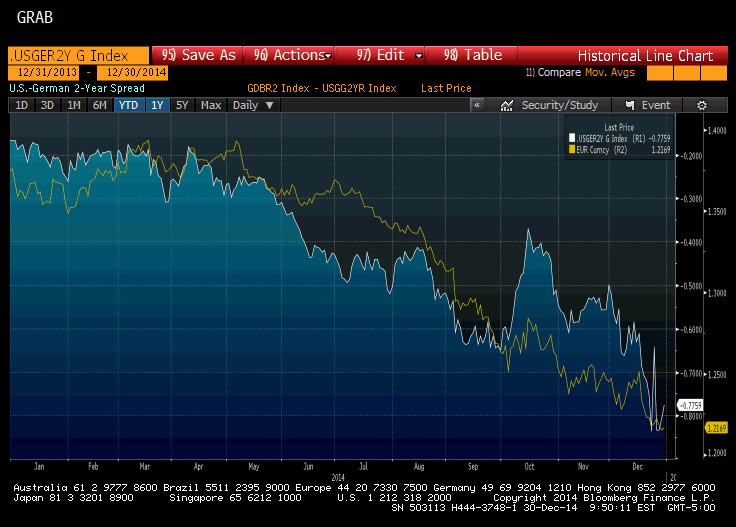There are many things behind the decline in the euro that pushed from $1.40 in early May to fresh two-year lows yesterday. Chief among those reasons, we posit, is the diverging trajectory of monetary policy.
The Great Graphic, created on Bloomberg, shows the euro-dollar exchange rate (yellow line) and the discount Germany pays under the US to borrow 2-year money (white line). Here is Q4 the two time series appear to be moving in lockstep again after diverging somewhat in Q3.
Each side has had its own perturbations. The German 2-Year fell below zero in August and has not been in positive territory since then. It did recovery from -10 bp to almost flat in late November before falling new amid heightened speculation of a sovereign bond buying program in early 2015. It made new record lows early today near -11 bp. The limited contagion of Greek political uncertainty, and the intensification of deflationary pressure in Spain (-1.1% vs -0.7% consensus and -0.4% in November) has kept expectations of ECB bond buys elevated. Italian, Spanish and Portuguese 10-year bond yields all fell to record lows today.
The U.S. 2-Year yield 50-60 bp in late summer before being halved to 24 bp in mid-October. However, the real sector data, including various labor market measures, have continued to improve, and the forward guidance by the Fed's leadership has given investors warning of a rate hike around the middle of 2015, barring a significant data surprise. The yield reached almost 75 bp last week, the highest in three years. The pullback in the US 2-year yield (now near 67 bp) and the 7 bp narrowing in the premium over Germany may signal a near-term consolidation phase for the euro, which fits nicely into the light participation expected now until early next week.
